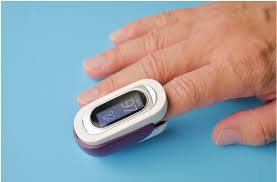
Pulse Oximetry Normal Range: The Optimal Oxygen Levels You Need to Know
Pulse oximetry is a noninvasive technique to measure oxygen levels in your blood vessels. It is a simple procedure that assists health care professionals assess how well your body is receiving oxygen. O2 is essential for our body to work efficiently, and deficiency of o2 can cause extreme health issues. On this page, we will talk about in detail about pulse oximetry, how it works, when it is required, and what the outcome imply for your health.
How does pulse oximetry function?
PULSE OXIMETRY is an easy test which uses a healthcare device known as a pulse oximeter. The detector of the pulse oximeter usually clips onto a finger, toe, or earlobe. It shines two beams of light, 1 red as well as the other infrared, from the blood flow within your finger or earlobe. O2-abundant hemoglobin absorbs the reddish lighting, although oxygen-inadequate hemoglobin soaks up the infra-red light-weight. The sensor procedures light transmitted via your tissue and calculates your oxygen saturation levels, which is a portion of the highest volume of air that the blood vessels can have.
When is pulse oximetry required?
Pulse oximetry is a crucial device in numerous healthcare options, which include medical facilities, emergency spaces, and ambulances. It is also employed in identifying and checking different medical conditions for example asthma, long-term obstructive pulmonary sickness (COPD), pneumonia, and lung illnesses. Aside from this, pulse oximetry is also employed during surgical treatment and also in intensive treatment products to keep track of the patient’s air saturation amounts.
What do the effects indicate?
Usually, a person’s oxygen saturation degree tumbles between 95 and totally. Nonetheless, in many medical ailments, the oxygen saturation degree may decrease below 90 percent, implying an absence of fresh air from the body’s muscle tissues. In such a scenario, the medical-care professional should intercede to increase the bloodstream fresh air levels. However, it is worth noting that very low air saturation degrees are certainly not always an indication of a health-related crisis.
Features of pulse oximetry:
Pulse oximetry is a noninvasive, uncomplicated, and fast examination which can be done without demanding plenty of products. You can use it in people of all ages, from neonates to old men and women. It’s also a crucial instrument in distant places, where research laboratory tests and products might be constrained, aiding medical doctors and nurse practitioners measure the patient’s issue or air saturation ranges, which can help decide if anyone demands more health care involvement.
Simply speaking:
Pulse oximetry is a necessary device that allows medical professionals to keep track of o2 levels in sufferers easily and correctly. It’s a noninvasive and uncomplicated test, making it an excellent device in assessing air saturation ranges and detecting health conditions. As being an affordable and mobile check, it is yet another critical asset in remote spots where by healthcare establishments are limited. An absence of oxygen in your body can bring about serious health issues, emphasizing the value of employing pulse oximetry being a analysis device within both emergency and non-urgent health-related scenarios.



